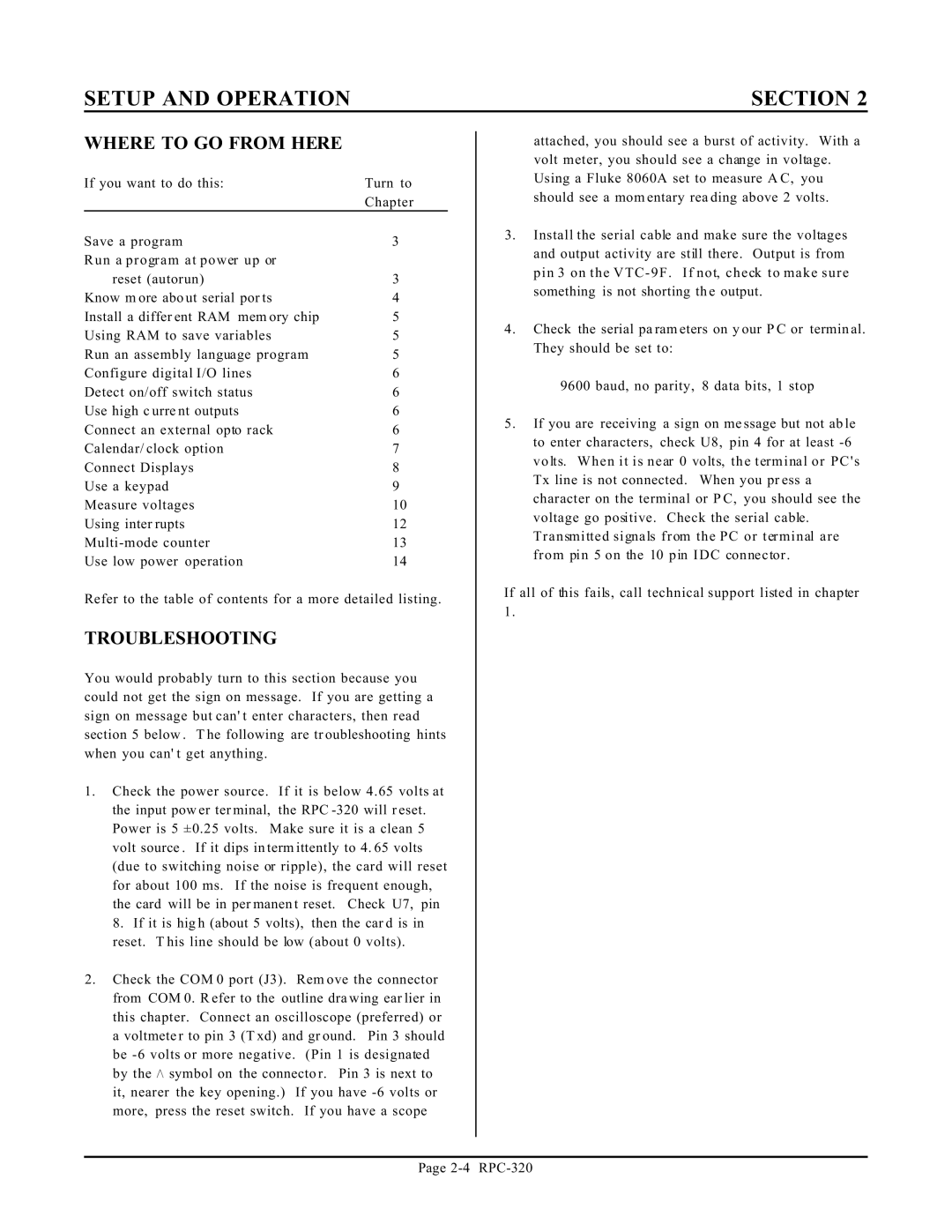
SETUP AND OPERATION
WHERE TO GO FROM HERE
If you want to do this: | Turn to |
| Chapter |
Save a program | 3 |
Run a program at power up or |
|
reset (autorun) | 3 |
Know m ore abo ut serial por ts | 4 |
Install a differ ent RAM mem ory chip | 5 |
Using RAM to save variables | 5 |
Run an assembly language program | 5 |
Configure digital I/O lines | 6 |
Detect on/off switch status | 6 |
Use high c urre nt outputs | 6 |
Connect an external opto rack | 6 |
Calendar/ clock option | 7 |
Connect Displays | 8 |
Use a keypad | 9 |
Measure voltages | 10 |
Using inter rupts | 12 |
13 | |
Use low power operation | 14 |
Refer to the table of contents for a more detailed listing.
TROUBLESHOOTING
You would probably turn to this section because you could not get the sign on message. If you are getting a sign on message but can' t enter characters, then read section 5 below . T he following are tr oubleshooting hints when you can' t get anything.
1.Check the power source. If it is below 4.65 volts at the input pow er ter minal, the RPC
(due to switching noise or ripple), the card will reset for about 100 ms. If the noise is frequent enough, the card will be in per manen t reset. Check U7, pin
8. If it is hig h (about 5 volts), then the car d is in reset. T his line should be low (about 0 volts).
2.Check the COM 0 port (J3). Rem ove the connector from COM 0. R efer to the outline dra wing ear lier in this chapter. Connect an oscilloscope (preferred) or a voltmete r to pin 3 (T xd) and gr ound. Pin 3 should be
SECTION 2
attached, you should see a burst of activity. With a volt meter, you should see a change in voltage. Using a Fluke 8060A set to measure A C, you should see a mom entary rea ding above 2 volts.
3.Install the serial cable and make sure the voltages and output activity are still there. Output is from pin 3 on the VTC - 9F . If not, check to make sure something is not shorting th e output.
4.Check the serial pa ram eters on y our P C or termin al. They should be set to:
9600 baud, no parity, 8 data bits, 1 stop
5. If you are receiving a sign on me ssage but not ab le to enter characters, check U8, pin 4 for at least
If all of this fails, call technical support listed in chapter 1.
Page
